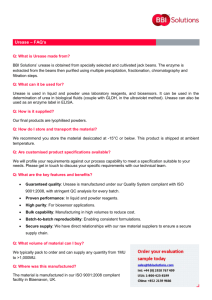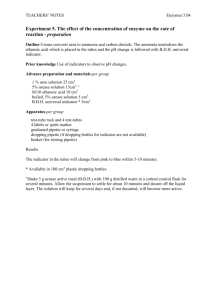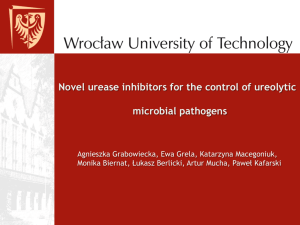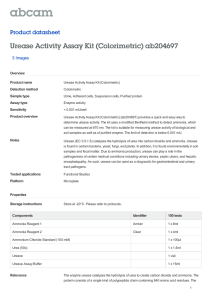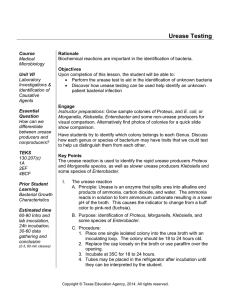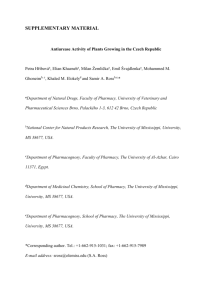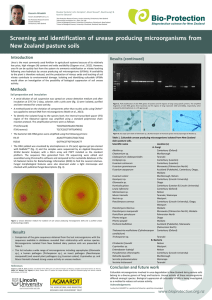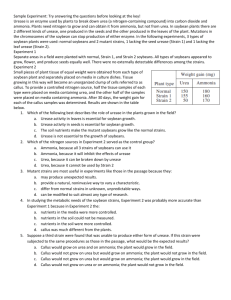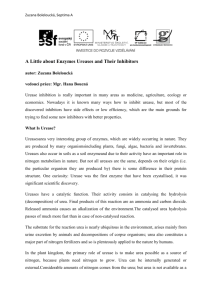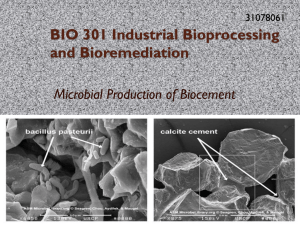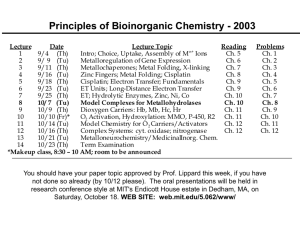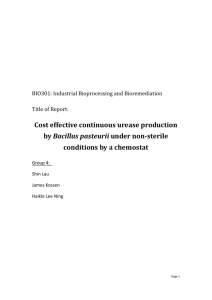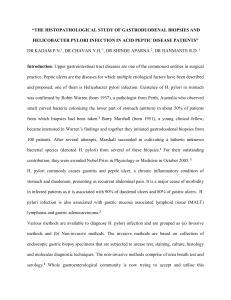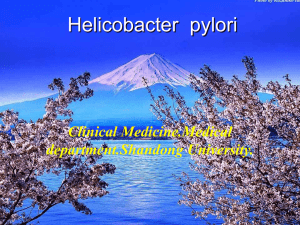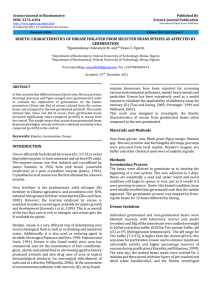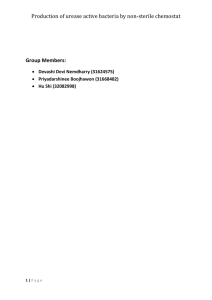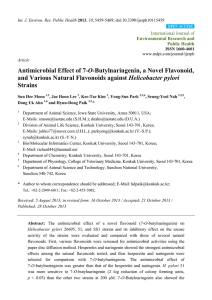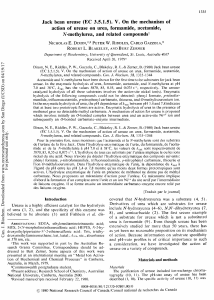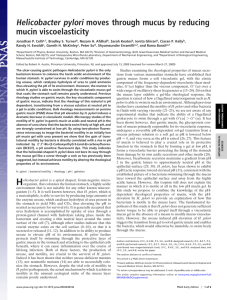Isolation of Helicobacter pylori Urease Nujhat N. Ali Mentors: Eric R
advertisement
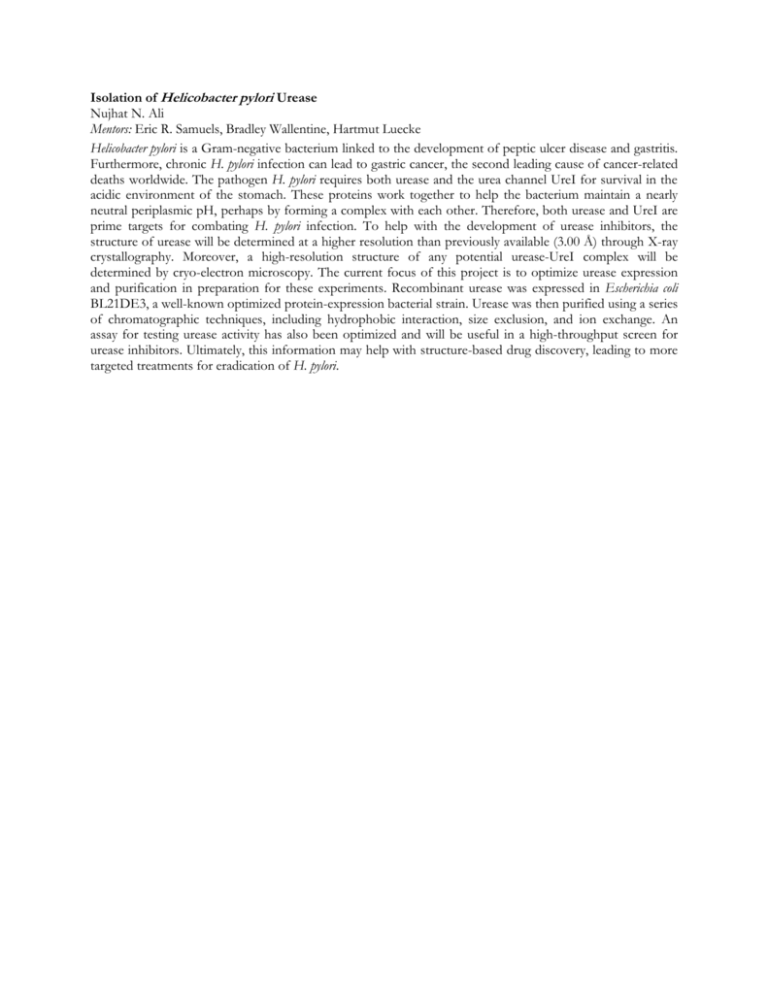
Isolation of Helicobacter pylori Urease Nujhat N. Ali Mentors: Eric R. Samuels, Bradley Wallentine, Hartmut Luecke Helicobacter pylori is a Gram-negative bacterium linked to the development of peptic ulcer disease and gastritis. Furthermore, chronic H. pylori infection can lead to gastric cancer, the second leading cause of cancer-related deaths worldwide. The pathogen H. pylori requires both urease and the urea channel UreI for survival in the acidic environment of the stomach. These proteins work together to help the bacterium maintain a nearly neutral periplasmic pH, perhaps by forming a complex with each other. Therefore, both urease and UreI are prime targets for combating H. pylori infection. To help with the development of urease inhibitors, the structure of urease will be determined at a higher resolution than previously available (3.00 Å) through X-ray crystallography. Moreover, a high-resolution structure of any potential urease-UreI complex will be determined by cryo-electron microscopy. The current focus of this project is to optimize urease expression and purification in preparation for these experiments. Recombinant urease was expressed in Escherichia coli BL21DE3, a well-known optimized protein-expression bacterial strain. Urease was then purified using a series of chromatographic techniques, including hydrophobic interaction, size exclusion, and ion exchange. An assay for testing urease activity has also been optimized and will be useful in a high-throughput screen for urease inhibitors. Ultimately, this information may help with structure-based drug discovery, leading to more targeted treatments for eradication of H. pylori.
